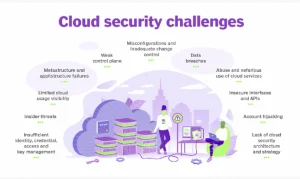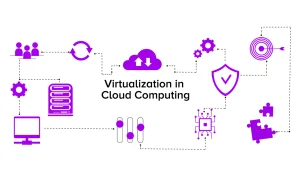Due to the high expenses and difficult IT architecture, corporations seldom had their own Content Delivery Network. This is no longer the case because of AWS CloudFront, a service that provides low latency, low network traffic, and fast data access at a low cost. Because of this, it is a popular network.
The AWS CloudFront content delivery network service will be examined in this blog. First, we’ll take a look at what the CloudFront service is and how it works. After that, we’ll talk about how to put this arrangement into practice and look at some examples of how it may be put to use. Finally, we’ll come to a conclusion.
What is AWS CloudFront?
AWS CloudFront is a worldwide dispersed network provided by Amazon Web Services that distributes material such as software, SDKs, films, etc. to customers quickly and securely.
AWS CloudFront is a data/content caching system that lives at the specified edge locations, to put it simply.
What, therefore, is edge location? An edge location is the closest point to the consumer (user) who is utilizing the AWS service. In these locations, the server is absent, but AWS CloudFront is configured so that data is stored and provided to the user from the nearest edge site rather than the original location, therefore accelerating the transfer speed.
If the material is already at the edge location with the lowest latency, CloudFront instantly distributes it. So, the material is not available at the edge location, CloudFront fetches it from an origin that you’ve specified, such as an Amazon S3 bucket, a MediaPackage channel, or an HTTP server (such as a web server) that you’ve recognized as the definitive source of your content.
AWS CloudFront delivery supports two delivery mechanisms The first is Web-based, whereas the second is RTMP-based.
Benefits of AWS CloudFront
1. Protection at the edge :
A Shield Standard protects all of your CloudFront distributions by default against the most common network and transport layer DDoS assaults that target your websites or apps. To fight against more complicated assaults, you may integrate CloudFront with AWS Shield Advanced and AWS Web Application Firewall to create a customizable, tiered security barrier (WAF).
2. Integralization using AWS :
Amazon CloudFront is connected with AWS services such as Amazon S3, Amazon EC2, Elastic Load Balancing, Amazon Route 53, and AWS Elemental Media Services to facilitate simple configuration.
3. Global Scalable Network for Rapid Content Distribution :
The CloudFront network contains more than 225 points of presence (PoPs) that are interconnected by the AWS backbone to give ultra-low latency performance and high availability to your end customers.
4. Cost-Effective :
Amazon CloudFront provides internationally cost-effective content delivery. There are no transfer fees for origin fetches from any AWS origin, and the AWS Certificate Manager (ACM) provides free custom TLS certificates.
5. High-performance, secure edge computing :
CloudFront enables you to execute your own code, enabling you to tailor content and reply to end users with reduced latency.
How Does AWS CloudFront Work?
AWS CloudFront operates as outlined below.
Step 1: The user visits a website and wishes to download an item, such as an image file.
Step 2: DNS directs the request to the CloudFront edge location closest to the user’s location.
Step 3: CloudFront checks its cache at the edge site for the requested files. If discovered, then return it to the user; otherwise, perform the actions below:
• CloudFront first analyzes the request against the standards and then transmits it to the appropriate origin server for the file type.
• Origin servers return files to CloudFront edge locations.
• As soon as the first byte arrives from the origin, CloudFront begins passing it to the user and caches the files at the edge location for the next time someone requests the same file.
Step 4: The item is now stored in an edge cache for 24 hours or for the length specified in the file headers. CloudFront performs the actions below:
• CloudFront transmits the next object request to the user’s origin to see if the edge location version has been updated.
• If the version at the edge site is updated, CloudFront transmits it to the user.
• If the version at the edge location has not been changed, the origin transmits the most recent version to CloudFront. CloudFront provides the item to the user and caches the most recent version at the edge location.
Conclusion
This finishes the blog on AWS CloudFront. This blog explained what AWS CloudFront is, its advantages, and how CloudFront operates. AWS is one of the world’s largest cloud computing organizations. If you wish to begin a career with AWS, we strongly advise you to advance in the Cloud profession. Have you any questions about this topic? Please feel free to contact us our experts will respond as soon as possible.









